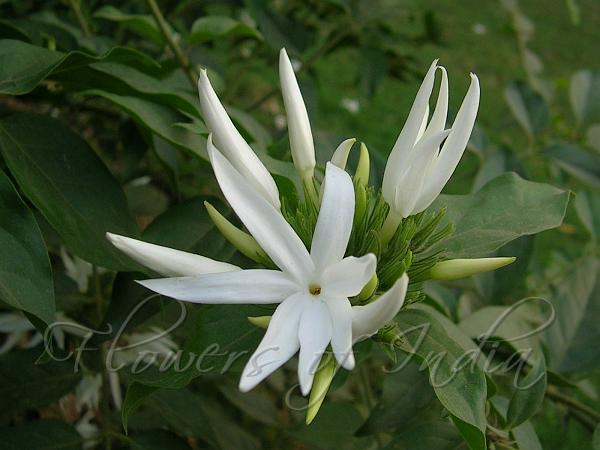|
| Star Jasmine |
|

|

| File size | 256908 |
| Original date | 10/14/06 5:01 PM |
| Resolution | 2048 x 1536 |
| Flash | Flash did not fire, auto |
| Focal length | 5.4mm |
| Exposure time | 1/192s |
| Aperture | 2.8 |
| Focus Distance | |
| Metering Mode | Partial |
| Camera make | NIKON |
| Camera model | E3700 |
| Sensor type |
|
|
|
|
Photo: |
Botanical name: Jasminum multiflorum Family: Oleaceae (Jasmine family)
Synonyms: Jasminum pubescens, Jasminum gracillimum, Mogorium multiflorum
Synonyms: Jasminum pubescens, Jasminum gracillimum, Mogorium multiflorum
Star jasmine can be thought of as an evergreen,
branching vine that can be trained as a shrub, or as a spreading,
vine-like shrub. It is usually seen as an open, spreading, weeping
(with hanging branches) mound, 3-10 ft tall and just as wide. The stems
and leaves are covered with a downy pubescence (micro hair) that gives
the plant an overall grayish-green appearance.
Leaves are opposite, simple; leaf-stalk 5-10 mm, densely hairy. Leaf blade
si ovate-heart-shaped, often broadly so, 3-8 x 1.5-5 cm, papery, with
scattered hairy on both surfaces. There leaves may be completely
hairless, except on midrib and veins, base heart-shaped, tip pointed
to sometimes slightly tapering, mucronulate. Primary veins are 3 or 4 on
each side of midrib. Flowers are borne in congested clusters at branch-ends on
small side shoots, many flowered. Bracts are leafy, basal ovate, 1.5-2 cm,
upper linear, 3-5 mm. Flower-stalks are 0-2 mm. Calyx is densely hairy; tube
about 1 mm; sepals 6-9, thread-like, 5-7 mm. Flowers are white, generally
scentless, tube 1.2-1.5 cm; petals 7-9, pointed, 1-1.5 cm.
Known by the name Kundo, it is very popular in Manipur.
In Indian mythology, Kunda is known for
its whiteness. So, instead of the common western phrase 'white as
snow', what often appears in Hindu mythological stories is 'white as
kund'. Flowers appear in bunches, almost throughout the year, and even
the buds look beautiful. In Manipur, Kundo flowers are used in worship,
and are an essential part of a marriage ceremony. The bride garlands
the groom with two Kundo flower garlands. The groom then takes one of
the two and garlands the bride.
| Identification credit: R.K. Nimai Singh | Photographed at Humayun Tomb, Delhi & Imphal, Manipur. |
• Is this flower misidentified? If yes,